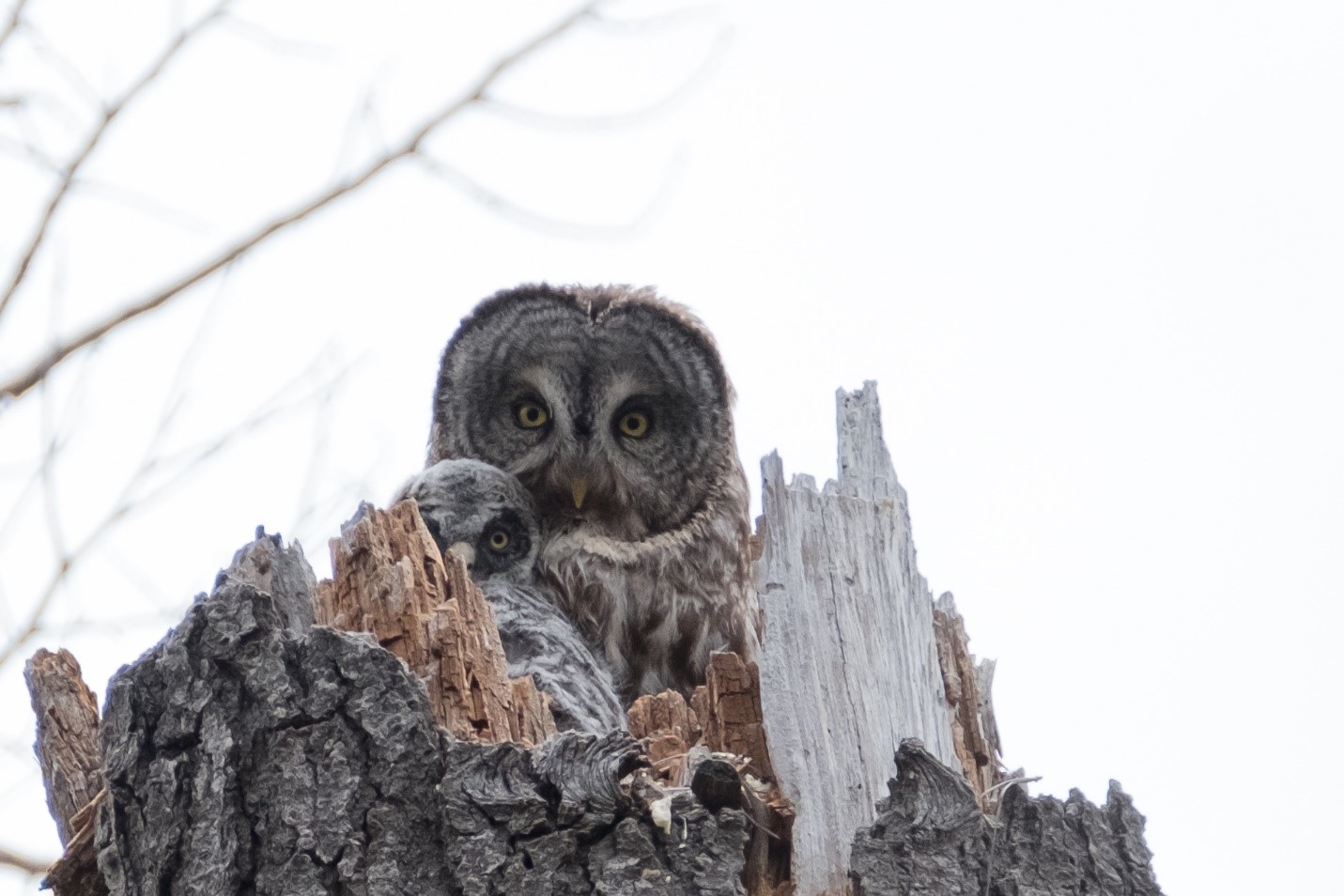Guest post by researcher Rodney Siegel
Linked paper: Short-term resilience of Great Gray Owls to a megafire in California, USA by R.B. Siegel, S.A. Eyes, M.W. Tingley, J.X. Wu, S.L. Stock, J.R. Medley, R.S. Kalinowski, A. Casas, M. Lima-Baumbach, and A.C. Rich, The Condor: Ornithological Applications 121:1, February 2019.
Throughout western North America, the combination of longer, hotter dry seasons and dense forests is yielding more frequent, larger, and more severe wildfires, including immense “megafires.” Habitat loss from increased fire activity could put wildlife species that depend on mature forest at risk. Concern over this threat is an increasingly important driver of forest management efforts in California’s Sierra Nevada, but recent efforts to assess the consequences of megafires on one bird species associated with the region’s mature forest, the California Spotted Owl (Strix occidentalis), have yielded conflicting results. Some research suggests that California Spotted Owls may be vulnerable to habitat loss and local extirpation due to forest fire, while other studies indicate that the owls may be fairly resilient, at least to low- and mixed-severity fire.
Like Spotted Owls, the Great Gray Owl (Strix nebulosa) is imperiled in California (where it is listed by the state as endangered) and is associated with mature forest. California’s Great Gray Owls typically nest in large, dead trees in shady forests adjacent to mountain meadows. In 2013 the Rim Fire, the largest fire on record in the Sierra Nevada, burned 104,000 hectares in Yosemite National Park and Stanislaus National Forest – the heart of Great Gray Owl’s range in California. Within the burned area were 23 meadows known to be occupied by Great Gray Owls during the decade prior to the fire, nearly a quarter of all known or suspected territories in California at the time.
We analyzed 13 years (2004–2016) of Great Gray Owl survey data from 144 meadows in the central Sierra Nevada, including meadows inside and outside the Rim Fire perimeter in Yosemite National Park and Stanislaus National Forest, to assess the effect of the fire on Great Gray Owls’ persistence during the early post-fire years. Would Great Gray Owls continue to use historically occupied meadows within the burned area, or would the fire cause those sites to go vacant?
During three years of surveys after the fire, we detected Great Gray Owls at nearly all (21 of 22) surveyed meadows within the burned area that were occupied during the decade prior to the fire, and anecdotal evidence indicated that the owls were not only present but actually nested at many of these sites during the post-fire years. Analyzing the full dataset, including surveys conducted before and after the fire as well as inside and outside the burned area, revealed that rather than decreasing after the fire, owls’ persistence actually increased at meadows across the study area. This increase suggests that the owls remained resilient during the three years after the Rim Fire and that other factors such as weather were likely favorable to Great Gray Owls during those post-fire years.
Our results indicate that wildfires, including unusually large megafires, may not pose a great threat to Great Gray Owls in the short term. However, processes not apparent during our study’s short timeframe, including the eventual decay and loss of the large snags that the fire created, could affect the owls’ longer-term persistence after fire. Further study is needed to determine whether Great Gray Owls continue to be resilient to fire over longer timeframes.
More information about The Institute for Bird Populations’ Great Gray Owl research and conservation efforts is available at http://birdpop.org/pages/greatGrayOwlResearch.php.
